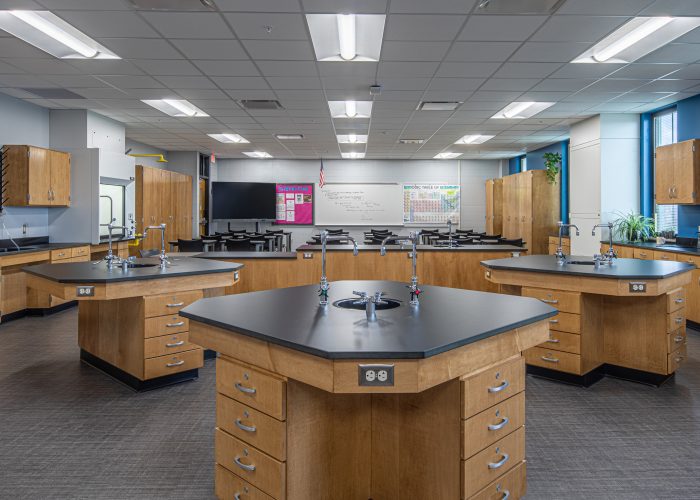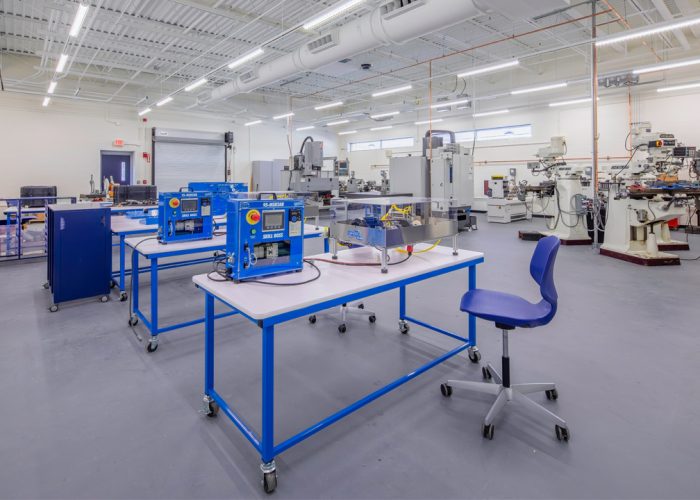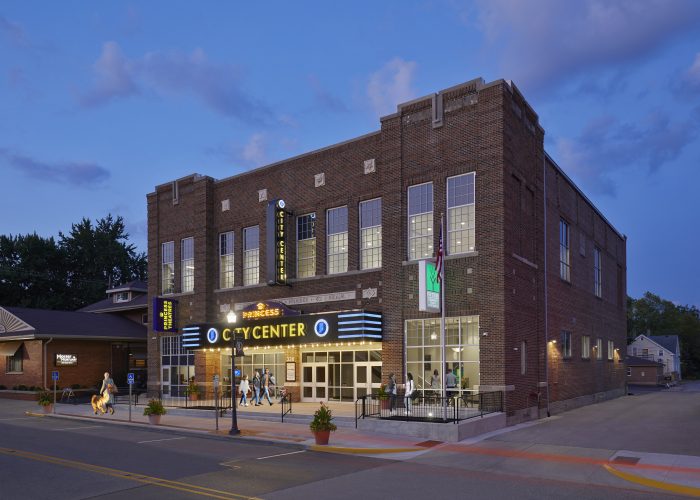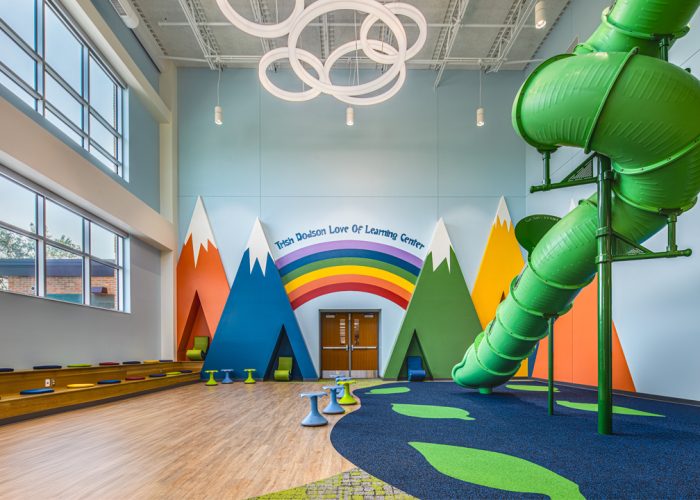According to the Lab Safety Institute, 81% of all research accidents occurred in teaching labs. Given that, creating a safe and effective learning environment is important when designing school laboratories. Ensuring the safety of both teachers and students not only fosters a productive educational experience but minimizes the risk of accidents and injuries.
School lab spaces are used more and more for hands on learning. They are being implemented throughout all grade levels from maker spaces at young levels to the diverse labs found at a high school level. Not only is good design required, but helping the school implement the design criteria and commit to providing adequate space for safe instruction is key. It can be tempting to schedule a few extra students into a class as skilled teachers may have tight schedules. Keep in mind that additional bodies can require additional equipment, reduced access to fixed equipment and space, therefore creating risk. Understanding current and future needs can help to ensure safe labs that stand the test of time and evolving needs of hands-on instruction.
Here are some key considerations for designing school labs with safety as the top priority.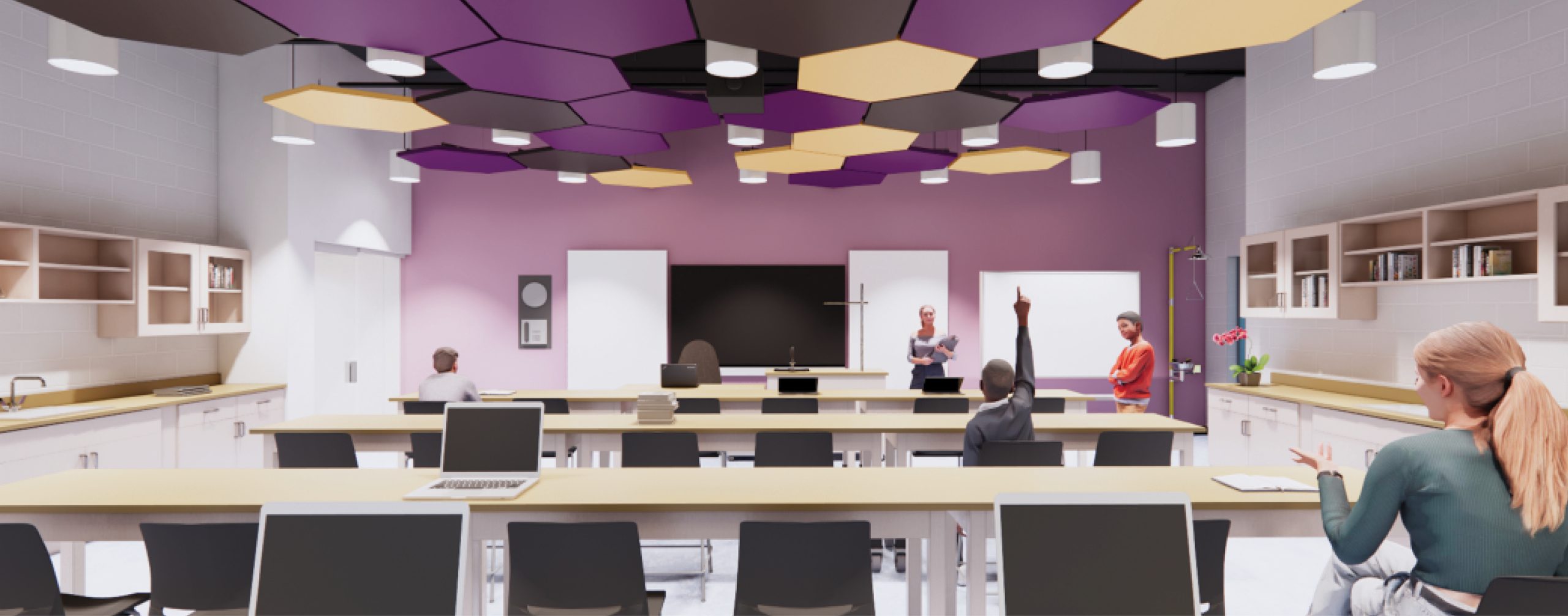
Create Science Labs that Prioritize Safety for Students and Teachers
Compliance with safety regulations and standards is the cornerstone of designing a safe laboratory environment in schools. These regulations ensure that labs adhere to established protocols protecting students and staff.
Check out some of the top influential organizations for the latest information on regulations: American National Standards Institute (ANSI), American Society of Heating, Refrigerating, and Air-Conditioning Engineers (ASHRAE), Next Generation Science Standards (NGSS), National Science Teachers Association (NSTA), and more.
When designing spaces, keep the following in mind:
- Adequate Space: Ensure that the lab has enough space to comfortably accommodate all students. Overcrowding can lead to accidents and hinder effective learning. Labs should feature sufficient floor space and work areas to ensure the safety of students and faculty.
- Accessible Safety Equipment: Safety equipment such as fire extinguishers, eyewash stations, and first aid kits should be easily accessible and clearly marked. Ensure all safety equipment is regularly inspected and maintained.
- Clear Procedures: Standard processes help ensure that students and staff know exactly what to do to avoid accidents and handle emergencies effectively. This includes proper handling of chemicals, use of equipment, and understanding safety protocols.
- Emergency Exits: Design the lab with multiple emergency exits that are easily accessible from any point in the room. Emergency exits should always be clearly marked and unobstructed.
- Electrical Safety: Install electrical outlets and equipment to minimize the risk of electrical hazards. Ensure installations comply with safety standards and are regularly inspected.
- Optimal Learning Environment: Like a normal classroom, labs should be designed as an optimal learning environment—considering lighting, acoustics, ventilation, thermal comfort, and indoor air quality.
- Master Shut-Offs: Lab instructors should have easy access to a master shutoff for gas, electricity, or any other service that could be dangerous should an accident occur.
- Proper Storage: Provide secure storage for chemicals, equipment, and personal belongings. Chemicals should be stored in labeled, lockable cabinets, and equipment should be organized to prevent clutter.
Related FAQ: What Factors are considered for laboratory environments?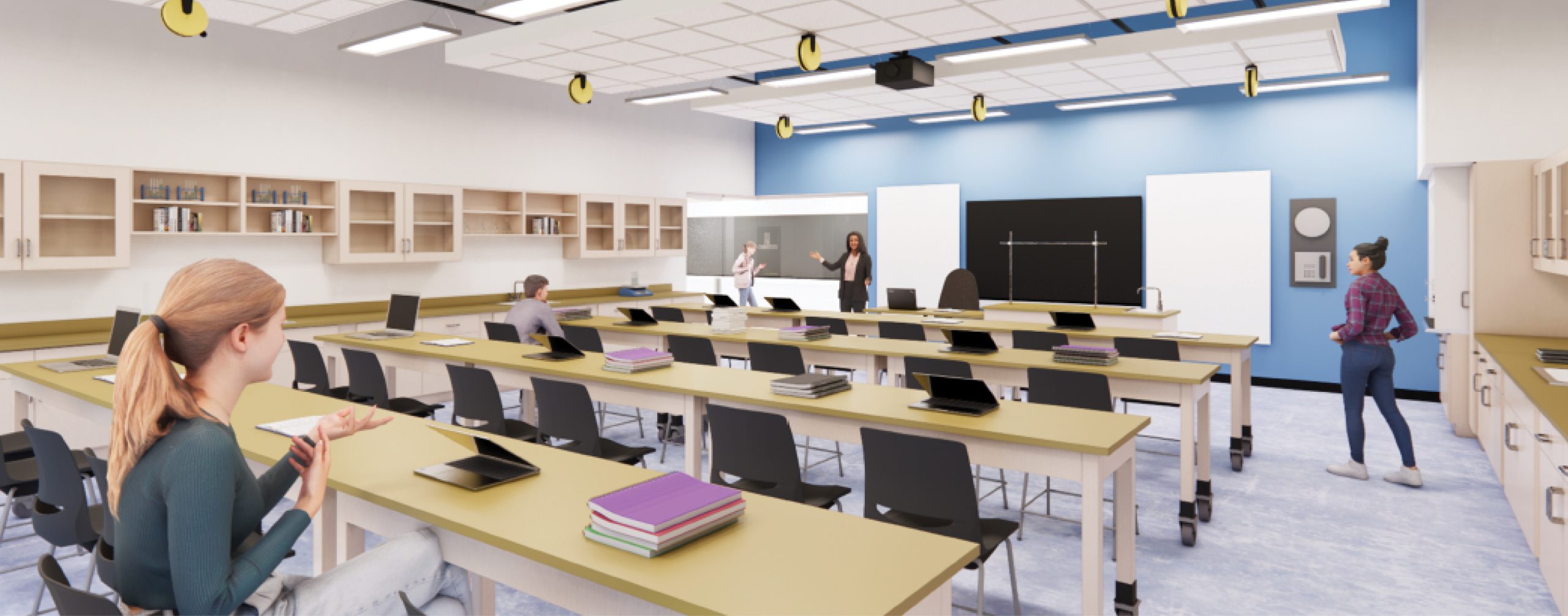
Minimize Risks with Proper Workstation Planning
Effective workstation planning helps maintain a clean and organized lab environment by designating specific areas for different activities, preventing cross-contamination, and ensuring tasks are conducted safely. Most importantly, well-planned workstations support effective supervision and instruction, allowing teachers to monitor activities and provide guidance, ensure safety protocols are followed, and promptly address potential hazards.
Tips for proper workstation planning:
- Ergonomic Design:To prevent strain and injury, workstations should be designed with ergonomics in mind. Adjustable chairs and desks should accommodate different student heights and preferences. Workstations should be arranged to minimize strain and movement, ensuring all necessary tools and materials are within easy reach.
- Clear Pathways: Arrange workstations to allow clear pathways for easy movement and access to safety equipment. Avoid placing workstations too close together to prevent overcrowding.
- Dedicated Areas: Designate specific areas for different activities, such as chemical handling, equipment use, and data analysis. This helps prevent cross-contamination and ensures that each activity is conducted in a controlled environment. A few examples include areas for wet lab work with sink and waterproof surfaces and areas for computer-based experiments and data analysis.
- Accessible Resources: Ensure all necessary resources, such as lab manuals, safety guidelines, and equipment instructions, are easily accessible at each workstation. This helps students and teachers follow proper procedures and stay informed about safety protocols.
- Storage Solutions: Label and organize storage units to keep chemicals, tools, and materials safe and accessible. Hazardous materials should be stored in secure cabinets equipped with proper ventilation.
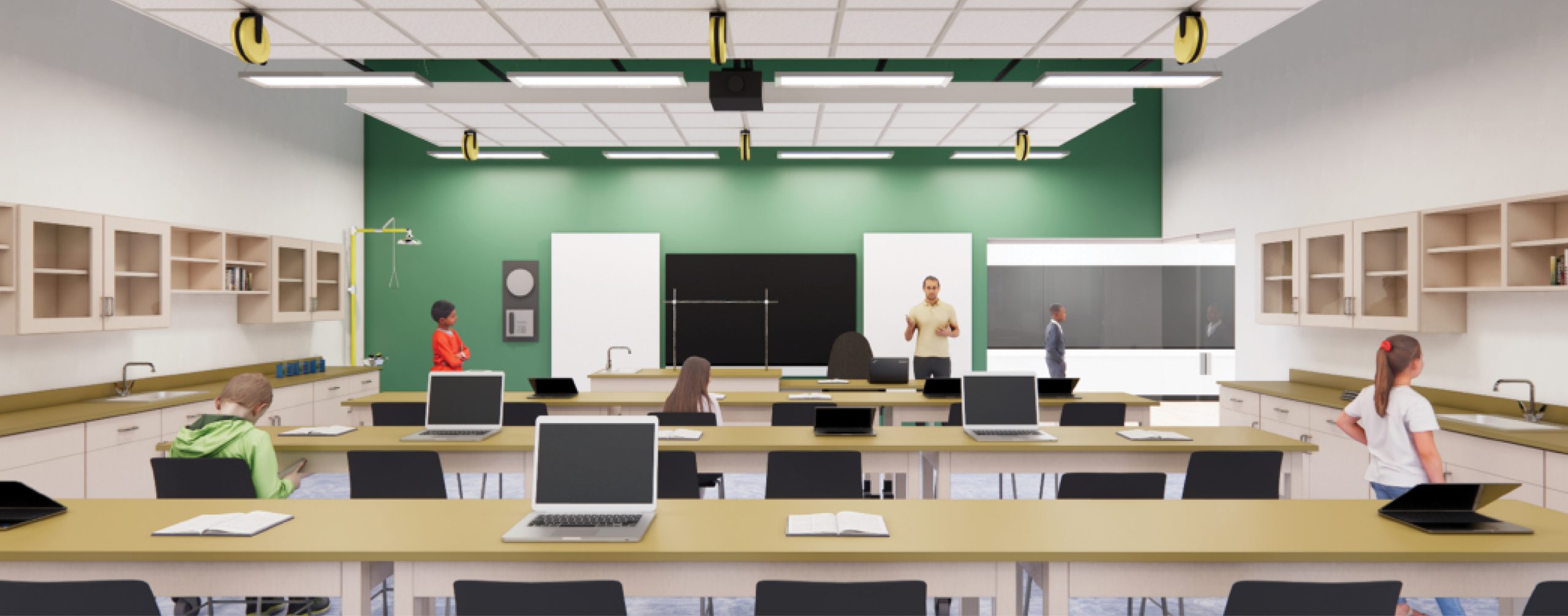
Important Safety Factors to Consider in School Labs
Implement Clear Safety Procedures
Clear and well-documented safety procedures are vital for preventing accidents. These procedures should cover the proper handling and disposal of chemicals, the use of lab equipment, and emergency response protocols. Regular safety drills can help ensure everyone knows what to do in an emergency.
Provide Comprehensive Safety Training
Teachers and students should receive comprehensive safety training before using the lab. Lab training should include information on the proper use of equipment, the importance of PPE (personal protective equipment), and how to respond to emergencies. Ongoing training sessions can help reinforce these safety practices and inform every one of the latest safety standards.
Ensure Proper Ventilation
Proper ventilation is essential in a school lab to prevent the buildup of hazardous fumes and safeguard a healthy learning environment. Fume hoods should be installed and regularly maintained to provide adequate ventilation when working with volatile substances. Additionally, ensuring that the lab is well-ventilated can help reduce the risk of environment-induced respiratory issues.
Regular Maintenance and Inspections
Regular maintenance and inspection of lab equipment and safety gear guarantee that everything is in good working order. Establish a routine schedule for checking and servicing equipment. Pro tip: A maintenance log can help track these activities and confirm that nothing is overlooked.
Foster a Culture of Safety
Creating a culture of safety in the school lab involves encouraging open communication about safety concerns and promoting a proactive approach to preventing accidents. Teachers should lead by example, demonstrating safe practices and reinforcing the importance of safety to their students. Encouraging students to speak up about potential hazards can address issues before they become safety concerns.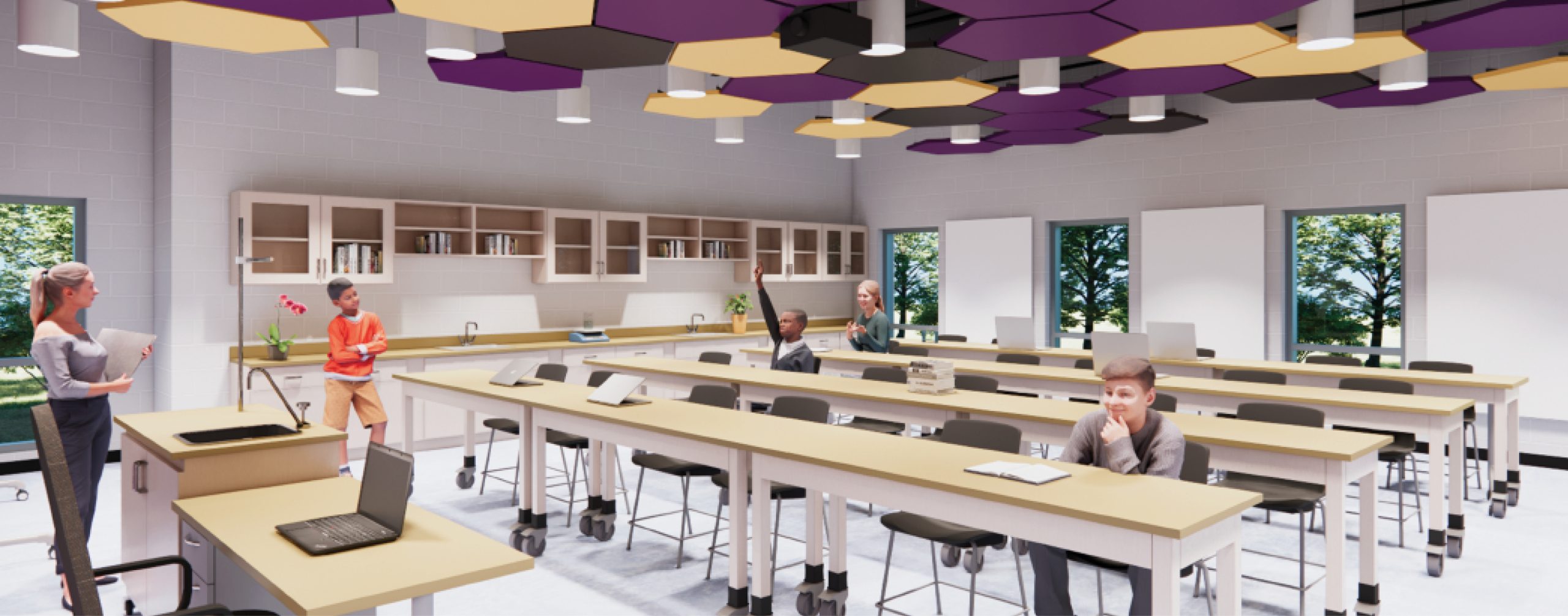
Design Directly Impacts the Safety of a School Science Lab
By prioritizing safety in the design and operation of school labs, educators can create a secure and effective learning environment for all. Implementing these strategies will allow teachers and students to focus on their educational pursuits without compromising their well-being.
Interested in improving your school’s lab design for better safety and instruction? Let’s chat!
Hear From Satisfied Clients.



